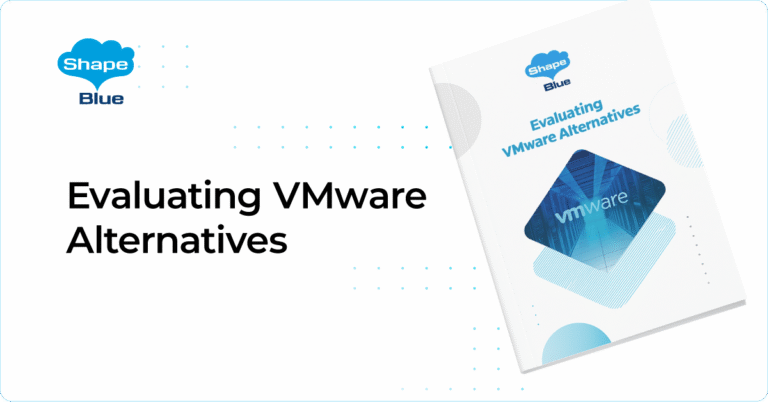Import Virtual Machines in CloudStack
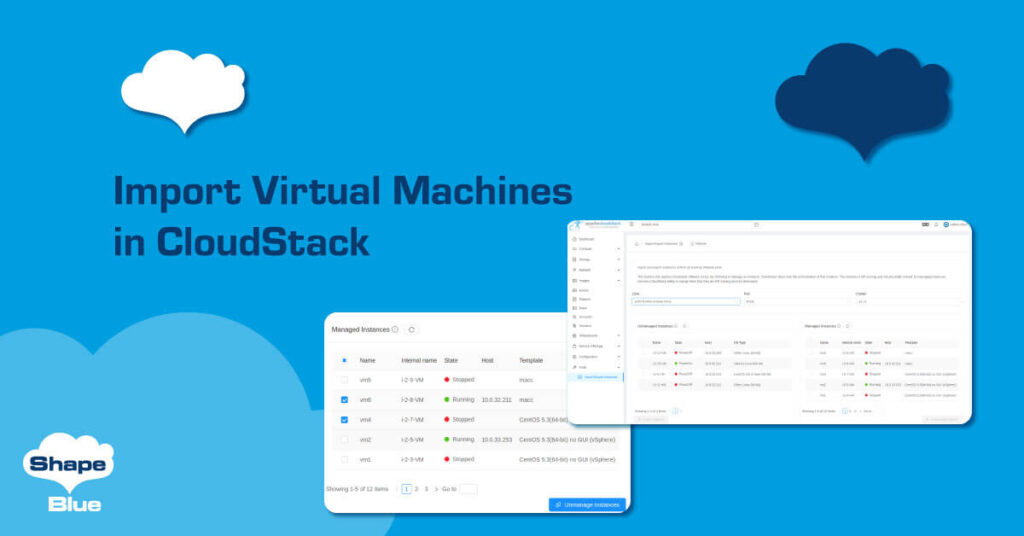
Since CloudStack 4.14 it has been possible to import virtual machines (VMs) from a vSphere cluster directly into CloudStack, which introduced the concept of managed and unmanaged VMs. Managed VMs are those controlled by CloudStack, whereas unmanaged VMs have been either deployed directly on the hypervisor or removed from CloudStack (using the unmanageVirtualMachine API). To […]
Rocky Linux and openSUSE Support in CloudStack
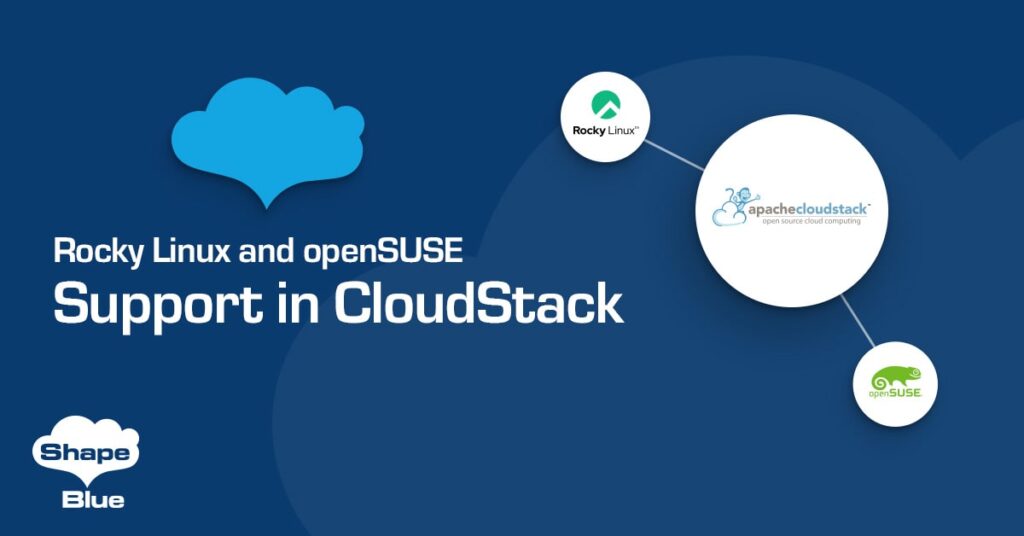
In December 2020, Red Hat announced major changes to the roadmap of its CentOS distribution, including the early end of life of CentOS 8 in December 2021. Due to this sudden and unexpected change, new Linux distributions have been developed as possible alternatives to CentOS, which are binary-compatible with Red Hat Enterprise Linux 8 (RHEL8). […]
Enable Bulk Actions via the CloudStack UI
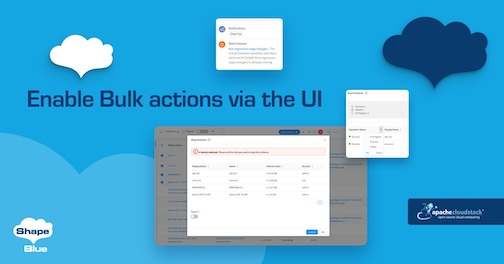
Want to start or stop a VM (Virtual Machine), or delete an offering in CloudStack? No big deal. However – what if you need to delete 20 offerings, or stop 20 VMs? Having to perform the same operation on each individual item is time-consuming, laborious and can be frustrating. Bearing this in mind, we’ve come […]
vSphere Datastore Cluster State Synchronisation
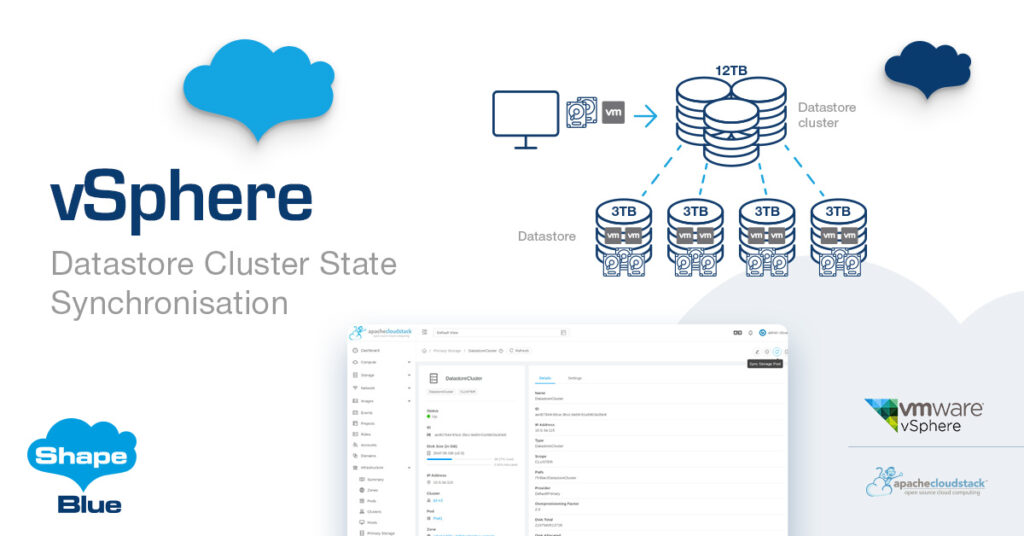
Apache CloudStack 4.15 introduced several new capabilities for vSphere, including support for datastore clusters. Following production use of the new features and feedback from users, an opportunity for improvement was noticed. If a storage pool is added or removed from the datastore cluster in vCenter, to see those changes in CloudStack it is necessary to […]
Storage Plugin for Dell EMC PowerFlex | CloudStack Feature First Look
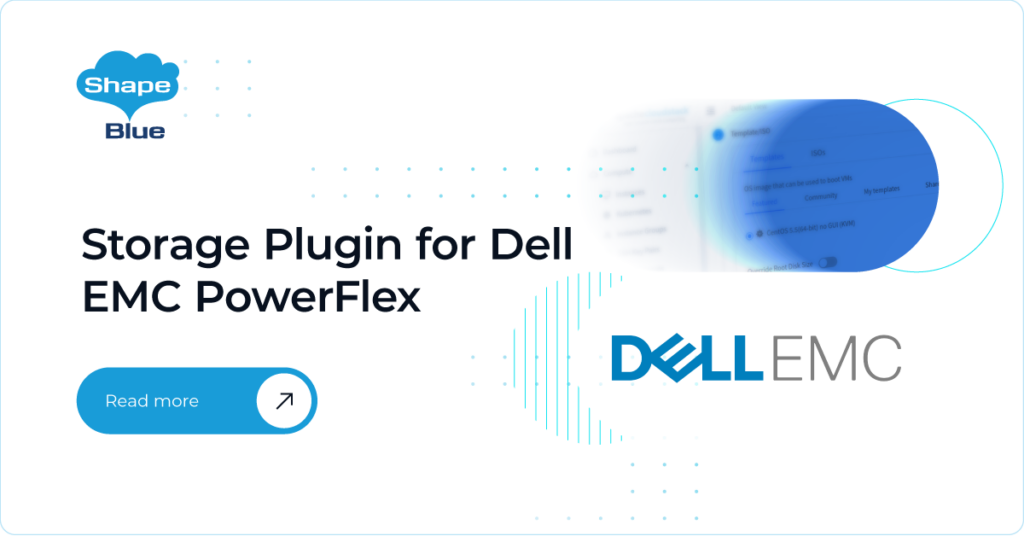
For primary storage, CloudStack supports many managed storage solutions via storage plugins, such as SolidFire, Ceph, Datera, CloudByte and Nexenta. There are other managed storages which CloudStack does not support, one of which is Dell EMC PowerFlex (formerly known as VxFlexOS or ScaleIO). PowerFlex is a distributed shared block storage, like Ceph / RBD storage. […]
XCP-ng 8.2 LTS Support Added to CloudStack
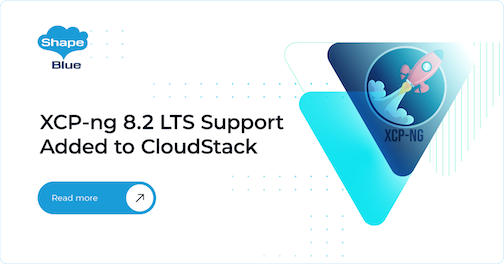
The latest version of XCP-ng – the opensource hypervisor based on XenServer – XCP-ng 8.2 was released in November 2020, and is the first long term support (LTS) version. As such it will receive support and updates for the next 5 years compared to only a year for a standard XCP release. The hypervisor is […]
L2 Persistent Networks and enhancement of Isolated Persistent Networks | CloudStack Feature First Look
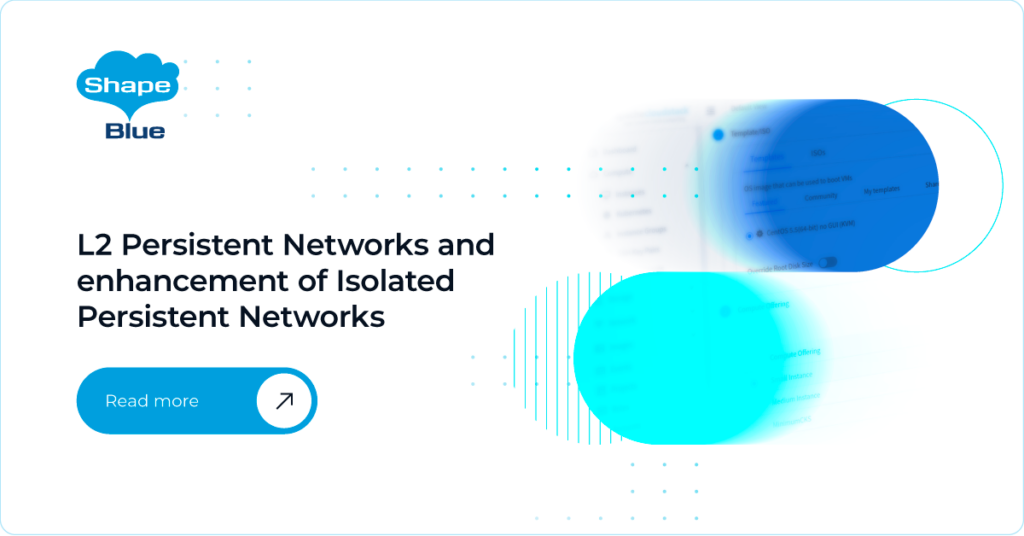
When a network is created in CloudStack, it is by default not provisioned until the first VM is deployed on that network, at which point a a VLAN ID is assigned. Until then, the network exists only as a database entry. If you wanted to create and provision a network without deploying any VMs, you […]
VMware Migration Improvements | CloudStack Feature First Look
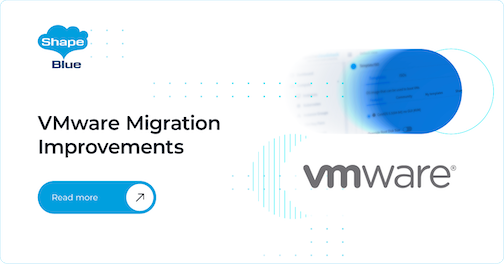
Migration of virtual machines between physical hosts or clusters is essential for cloud operators, allowing them to perform maintenance with little or no downtime, or balance compute and storage resources when necessary. CloudStack supports both live and cold migration (if supported by the hypervisor), and most hypervisors allow VM and volume migration in some form […]
Specify VR IP in Shared Networks | CloudStack Feature First Look
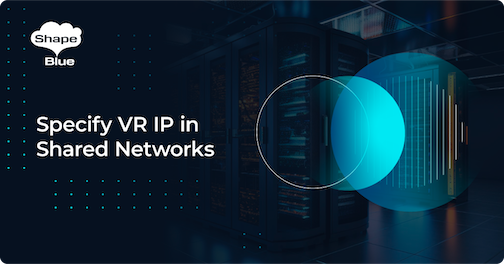
If you are a system engineer managing shared networks and deploying virtual machines with CloudStack, you should be aware that currently there is no option to assign a specific IP address for the Virtual Router. The router is assigned the first free IP address. For many engineers, this might be annoying, as you are not […]
Debian replaces CoreOS as CKS template | CloudStack Feature First Look
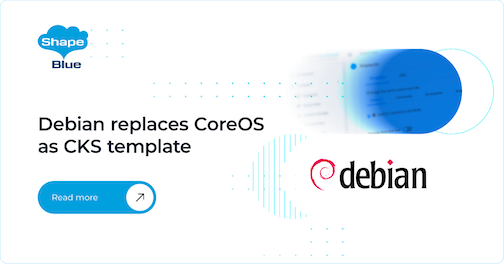
The CloudStack Kubernetes Services (CKS) uses CoreOS templates to deploy Kubernetes clusters. However, as CoreOS reached EOL on May 26th, 2020 we needed to find a suitable replacement meeting the requirements of resilience, security, and popularity in the community. Keeping these requirements in mind, we have chosen to modify the existing Debian-based SystemVM template so […]



